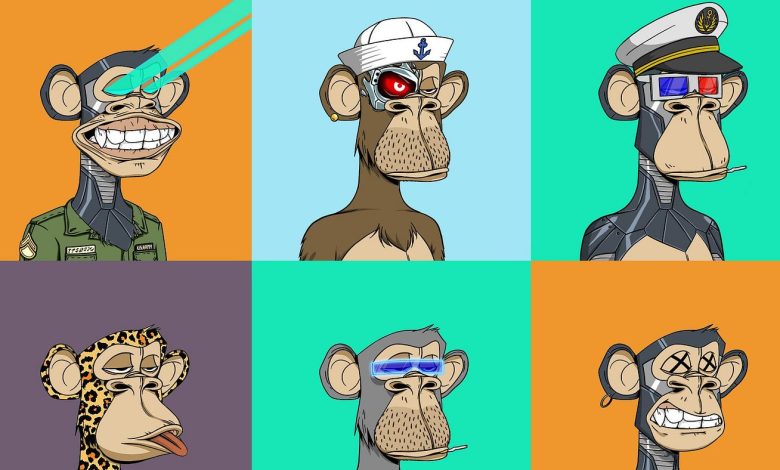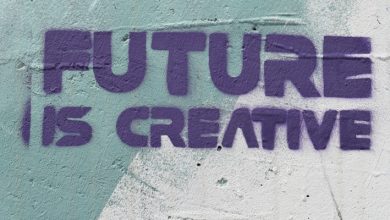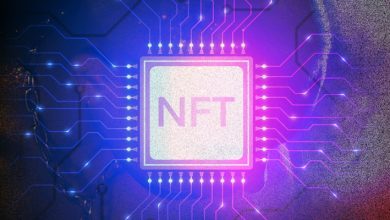Exploring Digital Art NFTs: Creators and Platforms

- Understanding the Rise of Digital Art NFTs
- Exploring the Impact of NFTs on the Art World
- Meet the Pioneering Creators of Digital Art NFTs
- Comparing Popular Platforms for Buying and Selling NFT Art
- The Future of Digital Art: NFT Trends and Predictions
- Navigating the Legal and Ethical Considerations of NFT Art
Understanding the Rise of Digital Art NFTs
Digital art NFTs have been gaining popularity in recent years as more artists and collectors embrace this new form of art ownership. NFTs, or non-fungible tokens, are unique digital assets that are stored on a blockchain, making them one-of-a-kind and easily verifiable. This rise in digital art NFTs can be attributed to several factors, including the growing interest in cryptocurrency and blockchain technology, as well as the desire for artists to have more control over their work and its distribution.
One of the key reasons for the rise of digital art NFTs is the ability for artists to tokenize their work, allowing them to sell limited editions or even one-of-a-kind pieces directly to collectors. This direct-to-consumer model cuts out the need for galleries or other intermediaries, giving artists more autonomy and potentially higher profits. Additionally, the transparent and secure nature of blockchain technology provides a level of authenticity and provenance that is highly valued in the art world.
Another factor contributing to the popularity of digital art NFTs is the rise of online marketplaces and platforms dedicated to selling and trading these unique assets. Platforms like OpenSea, Rarible, and Foundation have made it easier for artists to mint and sell their NFTs, while also providing collectors with a wide range of digital art to choose from. These platforms have helped to democratize the art world, allowing artists from all backgrounds to showcase and sell their work to a global audience.
Overall, the rise of digital art NFTs can be seen as a natural evolution of the art market in the digital age. With the increasing digitization of our world, it makes sense that art would follow suit, embracing new technologies and platforms to reach a wider audience. As more artists and collectors continue to explore the possibilities of digital art NFTs, it is clear that this trend is here to stay.
Exploring the Impact of NFTs on the Art World
Exploring the impact of NFTs on the art world has been a topic of great interest and debate in recent years. NFTs, or non-fungible tokens, have revolutionized the way digital art is bought, sold, and collected. Artists are now able to tokenize their work, creating a unique digital asset that can be bought and sold on various online platforms.
One of the key benefits of NFTs for artists is the ability to receive royalties every time their work is sold. This has the potential to provide a more sustainable income stream for artists, as they can continue to earn money from their creations long after they have been initially sold.
Furthermore, NFTs have opened up new opportunities for artists to reach a global audience and connect with collectors from around the world. This has led to a democratization of the art world, allowing artists who may have previously struggled to break into the traditional art market to showcase and sell their work online.
However, the rise of NFTs has also raised concerns about the environmental impact of blockchain technology, which is used to create and trade NFTs. Critics argue that the energy consumption required to mint and trade NFTs is unsustainable and contributes to climate change. As a result, there is ongoing debate within the art world about how to balance the benefits of NFTs with their environmental costs.
Meet the Pioneering Creators of Digital Art NFTs
Discover the innovative minds behind the groundbreaking digital art NFTs that are revolutionizing the art world. These pioneering creators are pushing the boundaries of traditional art forms and embracing the endless possibilities of the digital realm.
- One of the trailblazers in the digital art NFT space is **Bella**, whose vibrant and surreal creations have captivated audiences worldwide.
- **Maxwell**, another visionary artist, is known for his intricate and thought-provoking digital sculptures that challenge conventional notions of art.
- **Ava**, a rising star in the NFT art scene, combines elements of technology and nature to create mesmerizing and immersive digital experiences.
These creators are not only reshaping the art landscape but also paving the way for a new era of artistic expression. By harnessing the power of blockchain technology, they are able to authenticate and monetize their digital artworks in ways never before possible.
Comparing Popular Platforms for Buying and Selling NFT Art
When it comes to buying and selling NFT art, there are several popular platforms that artists and collectors can explore. Each platform offers unique features and benefits, catering to different preferences and needs. Let’s take a closer look at some of the top platforms in the NFT art space:
1. **OpenSea**: OpenSea is one of the largest and most well-known NFT marketplaces, offering a wide range of digital artworks for sale. Artists can easily create and list their NFTs on OpenSea, while collectors can browse through a diverse selection of pieces. The platform supports various cryptocurrencies, making it accessible to a global audience.
2. **Rarible**: Rarible is another popular platform for buying and selling NFT art. One of the key features of Rarible is its decentralized nature, allowing artists to mint their own tokens and retain full control over their creations. Collectors can discover unique and exclusive artworks on Rarible, making it a favorite among the NFT community.
3. **Foundation**: Foundation is a curated marketplace that focuses on supporting emerging artists and showcasing high-quality NFT art. The platform prides itself on its selective approach, ensuring that only top-tier artworks are featured. Foundation also offers a seamless buying and selling experience, making it a preferred choice for both artists and collectors.
4. **SuperRare**: SuperRare is known for its exclusive and limited-edition NFT art pieces, created by a select group of artists. The platform emphasizes the rarity and uniqueness of each artwork, attracting collectors who are looking for one-of-a-kind pieces. SuperRare also provides a social aspect, allowing users to interact with artists and other collectors.
5. **Nifty Gateway**: Nifty Gateway stands out for its partnerships with well-known artists and brands, offering a curated selection of NFT art drops. The platform hosts regular drops and auctions, creating a sense of excitement and urgency among collectors. Nifty Gateway’s user-friendly interface makes it easy for both artists and collectors to navigate the platform.
Overall, each platform has its own strengths and advantages, catering to different preferences within the NFT art community. Whether you’re an artist looking to showcase your work or a collector searching for unique pieces, exploring these popular platforms can help you find the perfect fit for your needs.
The Future of Digital Art: NFT Trends and Predictions
The future of digital art is evolving rapidly, with NFTs (Non-Fungible Tokens) playing a significant role in shaping the landscape. As creators and platforms continue to explore the possibilities of digital art NFTs, trends and predictions are emerging that offer insights into what lies ahead.
One key trend in the world of digital art NFTs is the growing popularity of blockchain technology. Blockchain provides a secure and transparent way to verify ownership and authenticity, making it an ideal solution for buying and selling digital art. This trend is expected to continue as more artists and collectors embrace the benefits of blockchain technology.
Another trend to watch in the digital art NFT space is the rise of decentralized platforms. These platforms allow artists to mint and sell their NFTs without relying on traditional intermediaries, giving them more control over their work and earnings. Decentralized platforms are expected to become increasingly popular as artists seek greater autonomy and flexibility in the digital art market.
Looking ahead, predictions for the future of digital art NFTs include increased collaboration between artists and brands, as well as the integration of virtual and augmented reality technologies. These developments are expected to create new opportunities for artists to reach wider audiences and explore innovative ways of creating and experiencing digital art.
Overall, the future of digital art NFTs is bright, with exciting trends and predictions pointing towards a more vibrant and diverse ecosystem for artists and collectors alike. By staying informed and embracing new technologies and platforms, creators can position themselves for success in this rapidly evolving landscape.
Navigating the Legal and Ethical Considerations of NFT Art
When it comes to NFT art, creators and platforms must navigate a complex landscape of legal and ethical considerations. One of the key issues is copyright infringement, as artists need to ensure they have the rights to the work they are tokenizing. Additionally, there are questions around ownership and resale rights, as well as the potential for fraud and theft in the digital art space.
Creators should consider consulting with legal experts to understand the implications of minting NFTs of their work. They may also want to explore smart contracts to automate royalty payments and ensure they receive compensation for secondary sales. Platforms, on the other hand, need to establish clear terms of service and guidelines for users to protect against legal disputes.
From an ethical standpoint, artists and platforms should be transparent about the environmental impact of NFTs, as minting and trading digital art can have a significant carbon footprint. There is also a need to address issues of inclusivity and diversity in the NFT space, ensuring that artists from all backgrounds have equal opportunities to participate and succeed.



